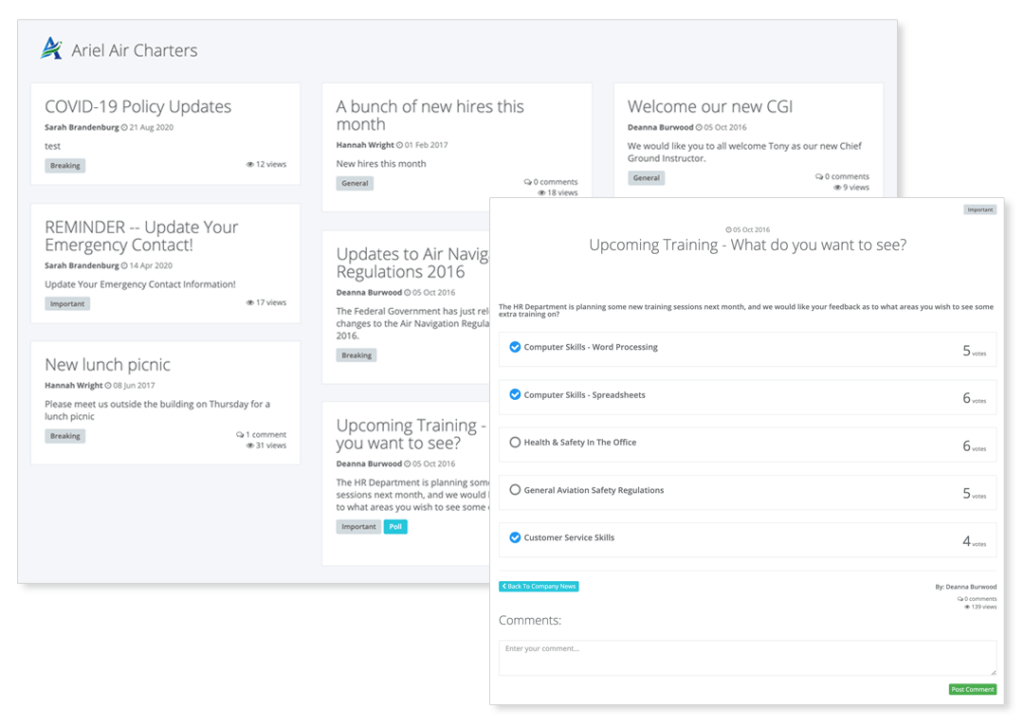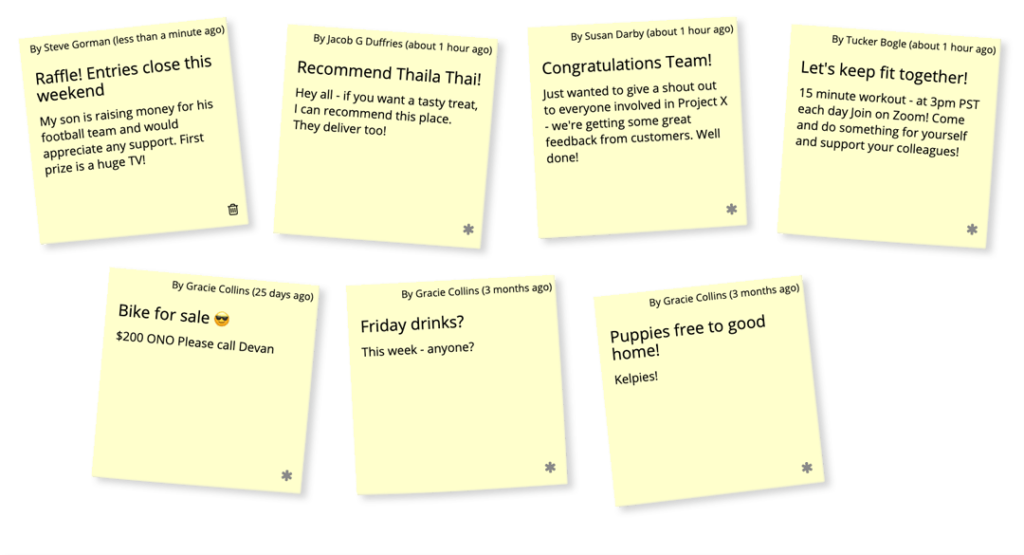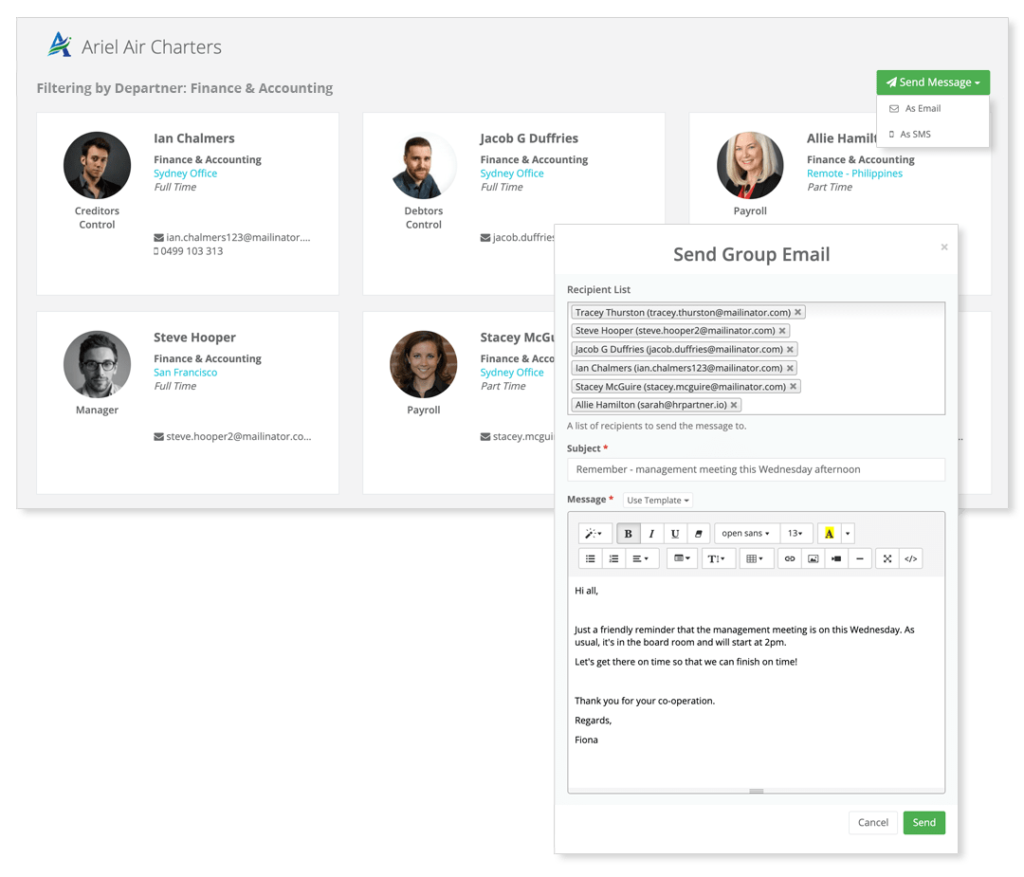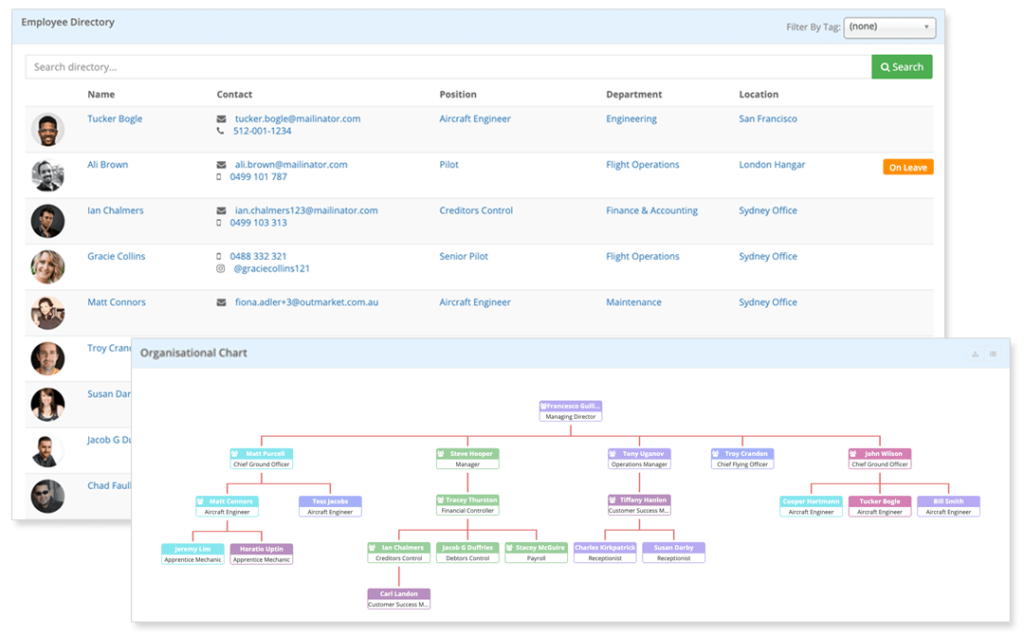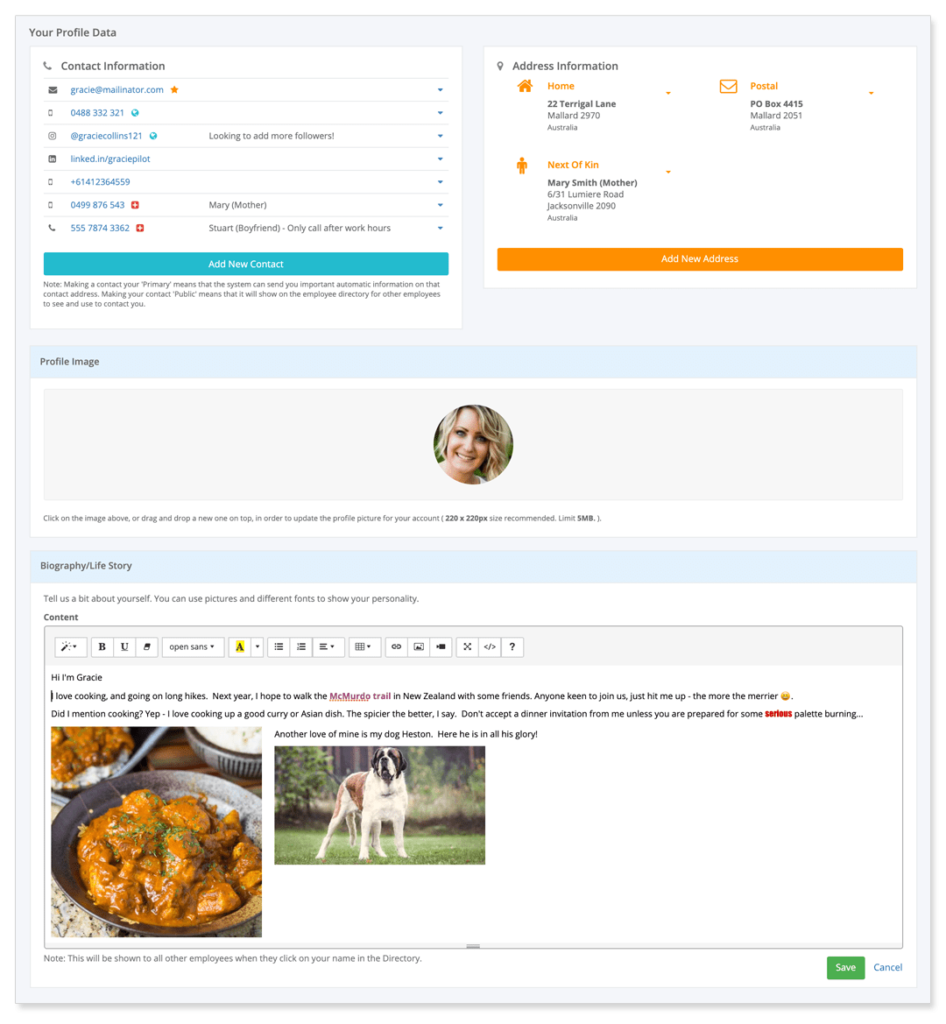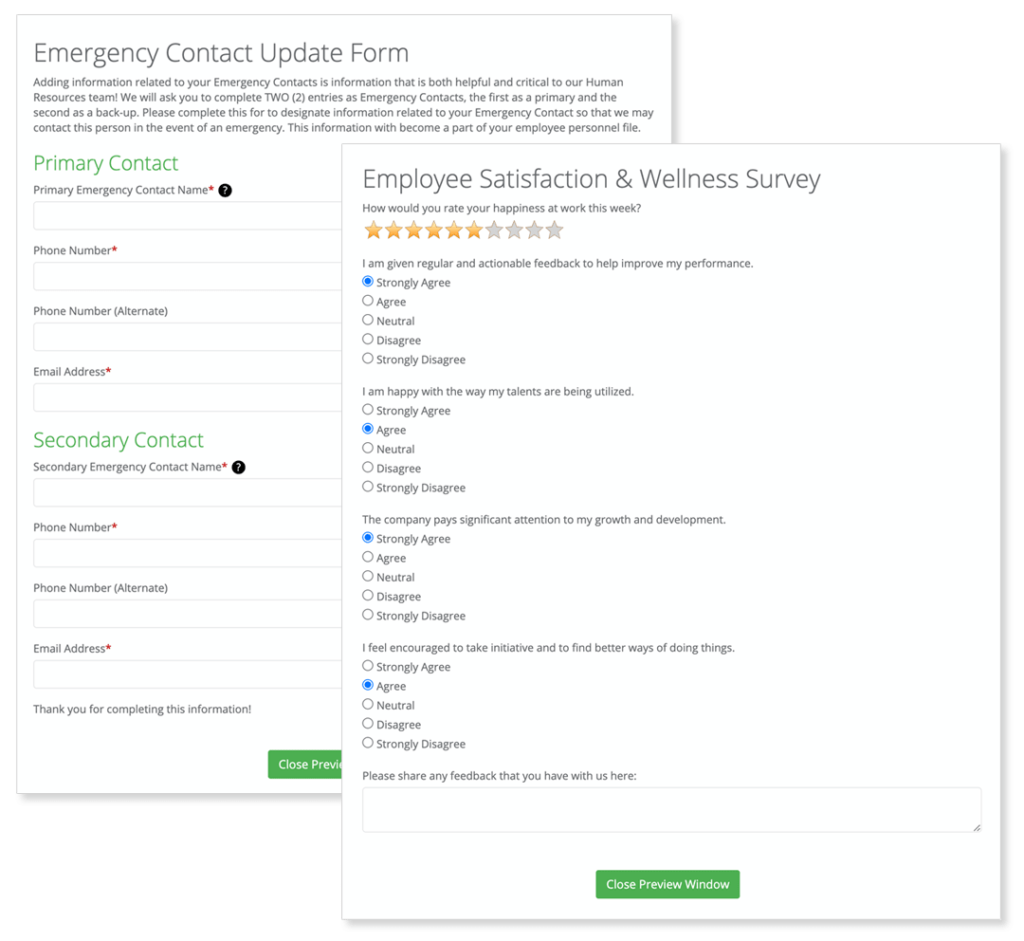Employee engagement is a phrase we hear thrown around a lot, and it certainly sounds important, but what does it actually mean and why is it a helpful metric to track and improve?
Way back in 2012, Forbes magazine published an article wrote that;
“Employee Engagement is the emotional commitment the employee has to the organization and its goals.”
Although this article is almost 10 years old it remains just as pertinent today. Employee engagement is more than simply ’employees being happy at work’ and even more than ‘job satisfaction’. To understand it properly, another term that is often used in conjunction with engagement is ‘discretionary effort’. This refers to people going above and beyond, consistently going that extra mile, not because they have to, but because they truly want to.
So employee engagement runs a lot deeper than an employee enjoying their work, it’s their connection to your company, a belief in what your organization is doing, and a deep knowing that they are a valued part of that vision.
We recently ran a webinar on this, so if you’d like to watch this, click here 👇
So why is Employee Engagement Important?
Simply put, engaged employees are productive employees and employees who take pride in their work.
Often they will view the company success as their own success and vice versa. This in turn leads to a more efficient workforce, a present workforce with low absenteeism, as well as lower turnover and a better company culture.
Together, these things are some of the key ingredients for your company’s success.
To fully understand this though, imagine the flip side of this – what happens if you have disengaged employees? Companies in this situation are likely to have higher levels of both absenteeism and attrition, which can become disruptive to other team members. High staff turnover can also be costly for your organization both in terms of the absolute cost involved in recruitment and onboarding, but it can also be costly in terms of your employer brand as potential candidates start to question why your retention rates are so low. Of course, moral is also impacted, which affects productivity and makes future recruitment tricky. It’s a slippery slope and a difficult situation to reverse – which it’s worth doing everything in our power to ensure our team members are engaged.
What REALLY Drives Employee Engagement?
Now let’s consider what drives employee engagement. There has been a huge amount of research into this area and while each piece of study draws its own conclusions, there are some notable recurring themes. When distilling these down, it’s clear that the three driving forces are;
- Company culture
- The team (including both co-workers and leadership), and
- Career development
Let’s dive into each of these separately…
1) Company Culture
Company culture essentially refers to ‘the way we run our business’. It’s a set of shared values, goals and the general attitude of a company, and it’s something that should be instilled and reinforced by managers on a day to day basis.
Ideally, the company culture should include a genuine caring for and valuing of employees – which also takes into account their individual situations.
But how do you achieve this? A positive company culture often develops organically when a company promotes good communication, openness and trust. For tiny businesses, this might arise naturally is driven by the values, habits and personalities of the leaders. But as businesses get larger, more deliberate mechanisms need to be put in place in order to drive a positive company culture. In practice, this requires having forums for communication and an openness in the approach to communication.
Some examples might include having a monthly “State of the Nation” or “Town Hall” meeting which involves the whole business coming together where the leadership can talk through the ‘good, bad, and the ugly’ of the month gone and openly discusses plans for the month ahead. Having honesty about anything that hasn’t gone to plan is equally important as demonstrating excitement for the future. It’s also a great opportunity to recognize achievements of individuals and teams and demonstrate the value placed on employees.
Tip! There are several tools within HR Partner that help you create this kind of open culture.
- News and Polls – This allows administrators to broadcast company news and updates, to keep employees informed. Employees are able to comment on the articles and express their own opinions, this opens dialogue and increases interaction. You can choose whether to broadcast the article via email and you can even publish a poll to gauge opinion on what might drive engagement, what might your team like to see. Polls are fully confidential, votes are counted, but nobody including the administrator can see who voted for which options.
- Pinboard Tool – This acts just like your office noticeboard and it’s a place for employees to publish pins about anything at all, whether they have something to sell, want a lunch date or maybe they’re in urgent need of an Excel guru who knows their way around a pivot table.
- Bulk Emails and SMS Messages – Admin User can also send bulk emails and SMS messages to people in certain departments or with certain tags. This can be used for any bulk communications but also to send a short message to ask how things are going and do a general temperature check.
2) The Team
The second driver of employee engagement is the employee’s team. According to several sources, an engaged employee has a commitment to their co-workers. This is about getting that buy-in from each other, truly understanding and respecting each other, which ultimately results in not wanting to let each other down.
There are many ways to influence these behaviors within a team, including;
- Team meetings – Similar to the discussion on company communications above, team meetings can be used not only to discuss work matters and keep everyone on track, but also to facilitate employees catching up with their colleagues and getting to know each other. Dedicate a section of your meetings to this. Kick off with ice breakers such as asking employees to tell everybody an interesting fact about themselves, or collate the facts in advance and ask the team to match the person to the fact. Find ways to help team members foster relationships with each other.
- Messaging tools – Today most of us have access to open communication channels such as Slack or Teams, and for remote teams, these are a big part of the solution. Within these tools, you can dedicate channels for “Random” or “General” topics and encourage employees to post about non-work related things. This might be what they’ve been up to over the weekend, family snaps, holiday stories, Netflix recommendations, recipe swaps, and more. Some companies go that bit further and may announce a theme or topic each day for colleagues to comment on. Having a chance to see another side of people can really helps a team come together.
- Team building activities – Getting together with team members to do something different is a great way for people to get to know each other. Things like escape rooms, murder mystery nights, race events can be excellent, but even something simple like getting pizza together can go a long way. And while in-person events are great, even virtual team activities can add a lot of value. For instance, you could organize online cooking lessons, remote wine tasting, book clubs, supper clubs, quizzes, scavenger hunts and more. Another idea are the team initiatives that challenge employees to come together to do a challenge (eg step count per day) or fundraise for a nominated charity.
Tip! There are several tools within HR Partner that help team members get to know each other.
- Employee Birthdays and Work Anniversaries – From the Dashboard, Admin users can easily see which employees have birthdays and work anniversaries which makes it easy to send out a group email, publish a company news article, or you can send a card or let all of their colleagues know. A simple thing like this makes people feel proud, valued and appreciated.
- Employee Directory on the Employee Portal – To help your team get to know and understand each other, HR Partner’s Employee Portal has the option of a biography section so that each employee can tell coworkers about themselves. They can share photos and let their colleagues know a little bit about them, what makes them tick and what makes them who they are. Employees can also find the (public) contact details of coworkers and see how everyone fits in on the org chart.
3) Career Development
The third and final employee engagement driver to focus on is the ‘opportunity to develop and progress’. Showing your employees that you believe in them and their potential, setting goals which are aligned with their own aspirations, but then giving them the autonomy and accountability really drives engagement.
In order to be able to progress, an employee needs to know where they are currently – which will come from a combination of informal, day-to-day feedback, weekly one-to-one meetings, as well as more formal appraisals and performance reviews. Leaders should ideally be looking to do these at least every 6 months. It might be tempting to postpone performance reviews, but these really are a critical piece of employee engagement.
Following on from this, employees need to feel that are making real progress towards their goals. This requires identifying goals and then having the support to take steps to achieve them. It could include things like shadowing colleagues, secondments to other business areas, networking opportunities, training courses or certifications, new projects, or a combination of these.
When thinking about career development, it’s important to recognize that this has very different meanings for different employees. For some people, ‘progression’ means moving up the pay scale, for others it may mean team leadership. There area also some people who aren’t interested in management but love what they do and would prefer to become a senior specialist or master of their trade.
Tip! HR Partner has many tools which can help you with appraisals, performance management and training needs analysis.
- Performance Management – The module here is a great way for you to plan upcoming reviews and record details about previous reviews. Admin users can set reminders and upload any documentation.
- Training Records – Similarly we have a training module to keep details of all training undertaken and store certifications.
- Skills Module – Keep records of which employees have which skills – this can help you spot any gaps that need to be filled and highlight employees who may benefit from some training.
- Document Library – Store company documents here to ensure employees have ready access to things such as company handbooks, ways of working guides, policies and guidelines, training materials, videos and more.
- Design-Your-Own Forms – Create custom forms for training requests, goal setting, self-appraisals, and more. You can also use this to design a anonymous satisfaction surveys.
So there you have it – the three drivers of employee engagement are as simple (and complex!) as Company Culture, The Team and Career Development. There are plenty of tools available for us all to improve in these areas and the payoff from improved employee engagement is certainly worth the effort.


